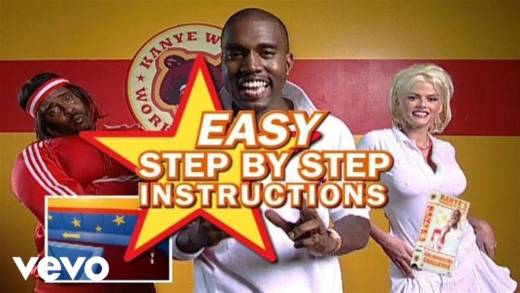When Madonna put together the post-modern video for her 2005 single "Hung Up," she used an ABBA sample in the song as a jumping-off point. Madge's feathered hairdo and pink leotard scream of the late-'70s more than "Physical," but the things that firmly put this clip in the time it actually came out is that pesky Dance Dance Revolution machine at the end, and the use of parkour. Parkour has since become the butt of so many jokes (see: The Office, 22 Jump Street etc.), it's hard to remember when it was still considered cool.
Thanks to the parts filmed in London, the video for "Hung Up" also joyously takes us back to that awesome period when Madonna's fake British accent was peaking. (#NeverForget)
Though Madonna managed to keep it (surprisingly) clean, workout videos can sometimes have a hard time staying tasteful (to put it mildly). Kylie Minogue's "Sexercise" video manages to pull off the sexy workout most successfully (though simultaneously changes the way we look at pilates balls forever). By far the worst offender is 2004's "Call On Me" by Eric Prydz -- a video so brazenly sexual, it's borderline NSFW.
More recently, Ariana Grande got a team of scantily-clad ladies to do a spin class in heels for her "Side to Side" video. Maybe the stationary bikes were inspired by David Banner's super-creepy 2005 video for "Play," but the lasting impression "Side to Side" leaves is most definitely butt-related. The focus on rear ends is absolutely unrelenting, each new scene offering a new and interesting way to get mesmerized by butts doing things in unison.
Arguably, "Call on Me," "Side to Side," and "Play" are all solid representations of the post-internet pornification of mainstream pop culture.
Back in 2004, Kanye West was on a totally different track with the unabashedly cynical video for "The New Workout Plan." It's a remarkable time capsule, featuring Anna Nicole Smith (RIP) and critiquing a culture that tells women they can "pull an NBA player" if their bodies look a certain way. It's impossible to escape the irony that Kanye has since married into a family famous for almost nothing but incredibly sculpted bodies and penchant for dating athletes.
What's more, the handbag-clutching L.A. stereotype that appears two and a half minutes in is basically a Kim Kardashian parody, three years before anyone even knew who Kim Kardashian was. One can't help but wonder if Kanye ever looks back at this thing and wonders how he ended up where he is now.
It's true that all music videos go some way to capturing the essence of the time in which they're made, but there is something about the workout music video that makes them age a lot more rapidly. Not that it tends to matter; the enduring popularity of the theme would seem to suggest that the opportunity to show plenty of exposed flesh and sculpted bodies cancels out any negatives for video producers and artists. As long as there are music videos, there will be an eternal excuse for more spandex and stretching caught on tape.


